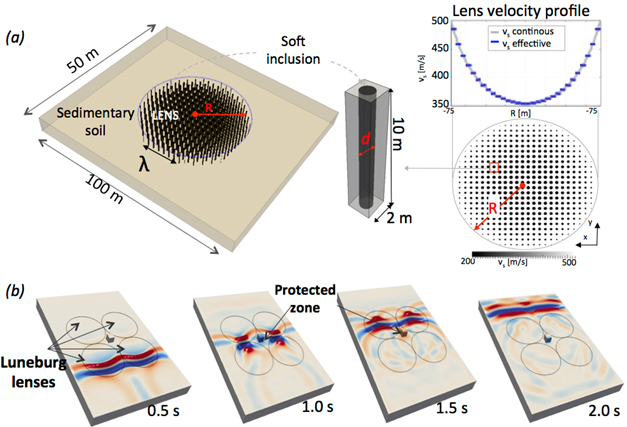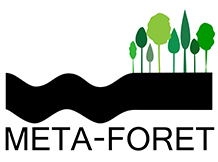1/ Metamaterial with buried vertical inclusions : the effective medium approach
The first approach foresees an artificially engineered subsurface surrounding the object to protect where waves are detoured away from the inner region (where the object is located) leaving the protected structure almost untouched. Once the waves have passed the object, they are rerouted to reconstruct the wavefront coherently realizing a sort of cloaking device for seismic surface waves.

This object represents a cloak for seismic waves and it is obtained combining 4 Luneburg lenses for SH and Rayleigh waves with an effective material having radially varying velocity (Fig. 1b). Using the filling fraction as the design parameter for the lens, we model fully buried columns of softer soil to obtain the sought material effective velocity profile. In practice such an object could be realized using the controlled modulus columns technique [Berthelot et al, 2003 ; Jenck et al, 2005] with the difference that, here, inclusions are softer and not harder (Fig. 1a) conversely to what is shown in WP1.2 Fig. 2 with concrete pillars). Numerical simulations will guide the realization of a large-scale experiment and anticipate the physics of the wave propagation in the cloaking device in the frequency range between 5 and 20 Hz. Since the inclusions in this model are strictly non-resonant, they will be inserted as heterogeneities in the background velocity model and projected over a very fine, although regular, mesh. With this approach, the mesh design is drastically simplified and the accuracy preserved.
Updated on 7 octobre 2016


